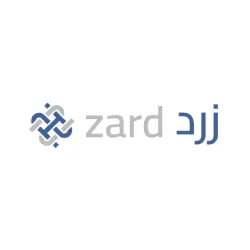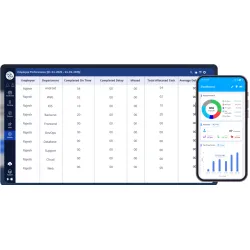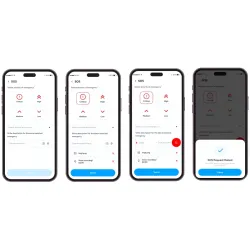Asset tracking is the process of monitoring the location, condition, and usage of physical assets using GPS technology, RFID, barcodes, or IoT sensors. Whether it’s vehicles, machinery, tools, or inventory, asset tracking gives businesses real-time visibility and control.
In Saudi Arabia and beyond, organizations rely on digital tracking systems to reduce loss, boost productivity, and improve operational decision-making. Platforms like ZARD offer modern, scalable asset tracking solutions tailored to various industries, from logistics and construction to healthcare and government services.
What is Asset Tracking in Business?
Asset tracking is a digital process used by businesses to monitor the movement and usage of valuable assets throughout their lifecycle. It involves attaching tracking devices or identification tags to assets and collecting data through a centralized platform. This allows for:
-
Real-time location tracking
-
Automated maintenance scheduling
-
Theft prevention via alerts and geofencing
-
Historical usage reports and audit logs
Whether tracking a delivery vehicle across Riyadh or monitoring tools in a remote site, businesses can reduce risk and improve efficiency through modern asset tracking systems.
How Do Asset Tracking Systems Work?
Asset tracking systems consist of two core components: hardware and software.
Hardware Components:
-
GPS Trackers – Provide real-time location of mobile assets like trucks or generators.
-
RFID Tags – Identify and scan assets within warehouses or work zones.
-
QR/Barcode Labels – Offer a low-cost way to manually track items during audits or transfers.
-
IoT Sensors – Monitor environmental conditions, usage hours, or asset movement.
Software Platforms:
Collected data is transmitted to an asset management dashboard, available via web or mobile. Users can:
-
View asset locations on a live map
-
Receive alerts for movement or maintenance
-
Access analytics and usage trends
-
Manage compliance logs and inspection records
ZARD’s asset tracking platform is one example that integrates all of these features into a unified system tailored for businesses in Saudi Arabia.
Top Benefits of Using Asset Tracking Systems
Implementing a professional asset tracking solution leads to measurable improvements across operations:
1. Real-Time Asset Visibility
Track assets 24/7 with up-to-date GPS data, even across large geographical areas.
2. Improved Maintenance Planning
Prevent breakdowns with usage-based alerts, reducing downtime and repair costs.
3. Theft and Loss Prevention
Set geofences and receive alerts if an asset moves outside approved zones.
4. Better Asset Utilization
Understand which assets are underused or overworked to allocate resources more effectively.
5. Faster Inventory Audits
Automate physical inventory tracking and cut manual processing time.
6. Compliance and Documentation
Generate detailed logs for inspections, certifications, and safety audits—especially important in regulated industries.
Common Use Cases for Asset Tracking
Logistics & Fleet Management
Monitor delivery trucks, trailers, or containers across the Kingdom with GPS and geofencing.
Construction & Contracting
Track bulldozers, cranes, and mobile equipment to reduce site delays and theft.
Healthcare Asset Management
Ensure availability and condition of portable medical equipment across departments.
Warehousing & Retail
Manage stock levels, reduce losses, and streamline reordering processes.
Government & Utilities
Monitor remote infrastructure, tools, and service vehicles with location and condition reports.
Businesses using platforms like ZARD benefit from having all assets visible in one system, no matter the sector.
Best Technologies Used for Asset Tracking
To choose the best asset tracking method, consider your environment, asset type, and mobility level:
-
GPS Tracking – Best for mobile, outdoor, and fleet assets.
-
RFID (Radio Frequency Identification) – Great for indoor scanning and automated tracking.
-
Barcodes & QR Codes – Ideal for inventory and manual processes.
-
Bluetooth Low Energy (BLE) – Useful for short-range indoor positioning.
-
NFC (Near Field Communication) – Enables fast check-in/out and access control.
-
IoT Sensors – Add real-time monitoring of asset health, temperature, movement, or tampering.
Advanced platforms like ZARD often support hybrid setups combining multiple technologies.
Frequently Asked Questions (FAQs)
What types of assets can I track?
You can track vehicles, machinery, IT equipment, tools, medical devices, containers, and more—anything with physical or operational value.
How accurate is GPS tracking?
GPS typically offers location accuracy within 5–10 meters, with updates every few seconds depending on the device.
Can asset tracking work indoors?
Yes. RFID, BLE, and Wi-Fi tracking are used where GPS isn’t effective, such as warehouses or hospitals.
Is asset tracking suitable for small businesses?
Absolutely. Systems like ZARD are scalable and can grow with your operations, whether you manage 10 assets or 10,000.
What if my asset is in a remote area?
Trackers with offline logging or satellite connectivity can store and sync data when reconnected to a network.
Is the data secure?
Yes. Leading platforms use encrypted data transfers and secure cloud servers for full protection.
Can I integrate asset tracking with my ERP or fleet system?
Modern platforms offer API integrations for seamless syncing with third-party software.
Final Thoughts: Why Asset Tracking Matters
Asset tracking is no longer a luxury—it's a strategic necessity for businesses looking to improve visibility, reduce losses, and operate efficiently. Whether you're managing field equipment, transport vehicles, or sensitive tools, a digital tracking system ensures you're always in control.
For businesses in Saudi Arabia, platforms like ZARD offer secure, scalable, and regulation-compliant solutions designed to fit your operational needs.
Take control of your assets—track smarter, operate stronger.


